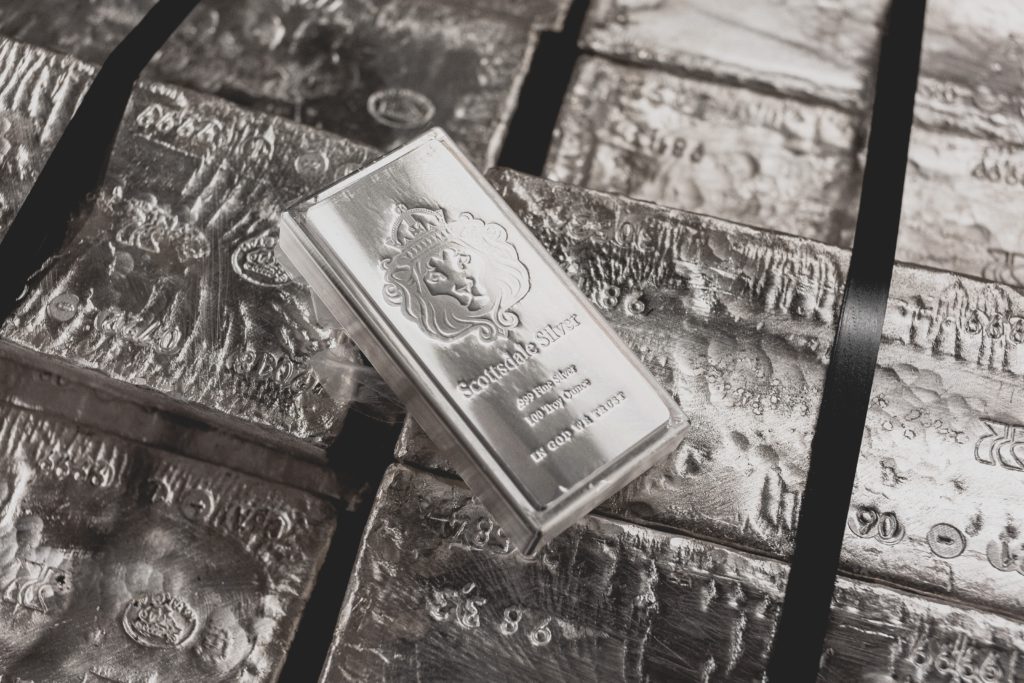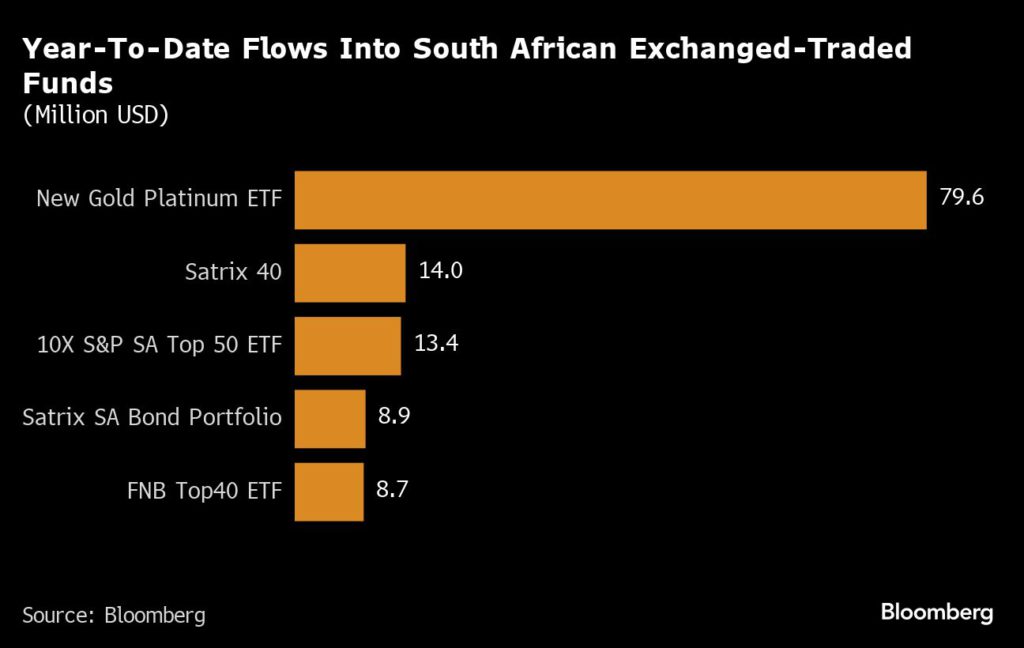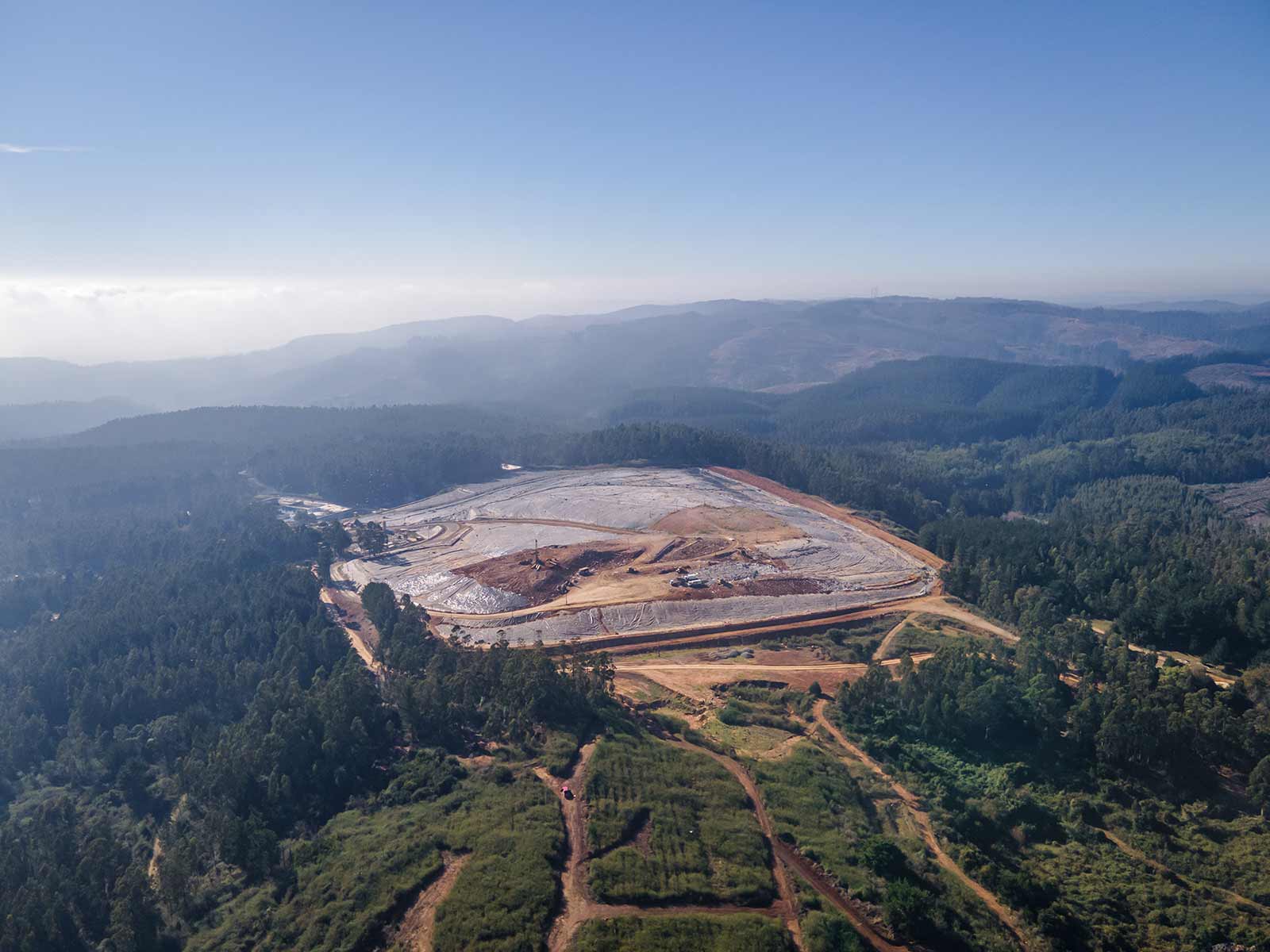New platinum ETF fund drives investor capital to South Africa

South Africa recorded 761 million rand ($40 million) of fund inflows this month, largely driven by investor allocations to Absa Bank Ltd.’s New Gold Platinum ETF.
The fund, launched in 2013 by Absa’s Corporate and Investment Banking division, allows direct investments in platinum traded on the spot market and registered the highest inflows among locally listed funds on a monthly and annual basis.
That’s despite a slowdown in the global commodities boom and declining demand from China, the country’s biggest trade partner, which has weighed on commodity prices.
The fund “experienced significant inflows, reversing all outflows experienced in 2022 within the first quarter of 2023,” said Michael Mgwaba, head of exchange-traded products at Absa CIB. “The investment case for platinum has been stronger” this year, he said.

Still, South Africa’s fund inflows this year rank second lowest among ten emerging market nations, according to data compiled by Bloomberg.
Robust demand in the automotive and industrial sectors as well as growing demand from the hydrogen economy have resulted in temporary platinum shortages, boosting prices and the value of the ETF, he said.
A 16.9% jump in the production of platinum-related metals in October resulted in a 3.9% increase in output by the South African mining industry compared with the prior-year period, data from the country’s statistics office showed this week. The growth in mining output followed a 1.9% contraction in September.
Power cuts and inefficient rail and port infrastructure are expected to continue weighing on the mining sector, Thanda Sithole, an economist at First National Bank said in a note Tuesday. Slowing global growth, including in China, is boding ill for the country’s mineral exports, Sithole said.
Absa’s ETF also benefits from investor demand in Botswana and Namibia, where the 7.6 billion rand fund has secondary listings, according to Mgwaba.
Similar to gold, “platinum is a hard asset that investors could consider during times of increased market risk,” he said. Investors also use the fund as a currency hedge as the underlying asset is priced in US dollar, compared with the ETF that’s priced in rand.
(By Timothy Rangongo)
More News
{{ commodity.name }}
{{ post.title }}
{{ post.date }}

Comments